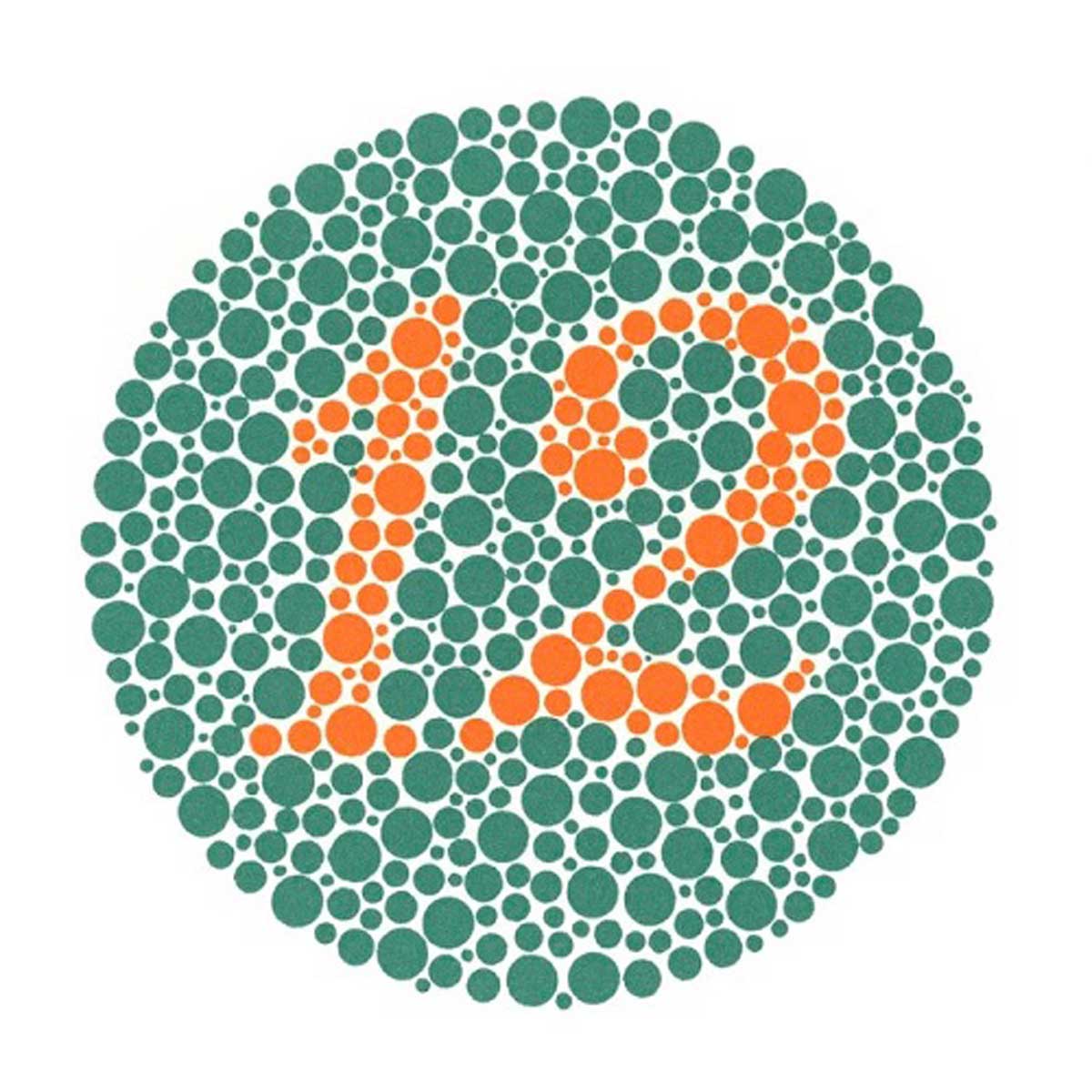 |
The Ishihara color vision test only detected half of color deficiency cases in this study. Photo: Colorlite. Click image to enlarge. |
Ishihara plates are a staple of optometric practice, despite being known to miss some cases of color deficiency, especially blue-yellow abnormalities. To test their performance in picking up red-green deficiency, researchers recently conducted a cross-sectional study to compare and combine the results from genetic analysis with the Ishihara (24-plate ed., 1964) and the Hardy-Rand-Rittler (4th ed., 2002) pseudoisochromatic plate tests.
The analysis included 454 healthy participants with normal habitual visual acuity. DNA was collected and used in genotyping assays of OPN1LW and OPN1MW genes from each participant, using a test called MassArray. When using pseudoisochromatic plate tests alone, red-green color deficiencies were identified in 5.2% of men and 1.1% of women. Comparatively, the combination of MassArray and pseudoisochromatic plate test results revealed 10.4% of males and 0.8% of females to be color deficient. Combining genotyping with either pseudoisochromatic test “improves the sensitivity considerably, identifying >97% of color-deficient males and misidentifying 1% of color-normal males,” the study authors explained in their paper.
Data revealed that the combination of the Ishihara test with MassArray is sufficient in identifying red-green color deficiencies in males, but not females. The researchers determined that including the Hardy-Rand-Rittler test allows for the identification of color deficiencies in females as well as grading of the deficiency.
“In general, even when the genotype is not known, as a minimum, both the Hardy-Rand-Rittler and the Ishihara pseudoisochromatic plate tests should be completed, and the results combined, in the identification of red-green color deficiencies,” the researchers concluded. “Further studies are required to understand the phenotypical implications of cone opsin genes that confer red-green color vision deficiencies that cannot be reliably identified with standard pseudoisochromatic plate tests.”
Arnegard S, Baraas RC, Neitz J, et al. Limitation of standard pseudoisochromatic plates in identifying colour vision deficiencies when compared with genetic testing. Acta Ophthalmol. February 3, 2022. [Epub ahead of print]. |

